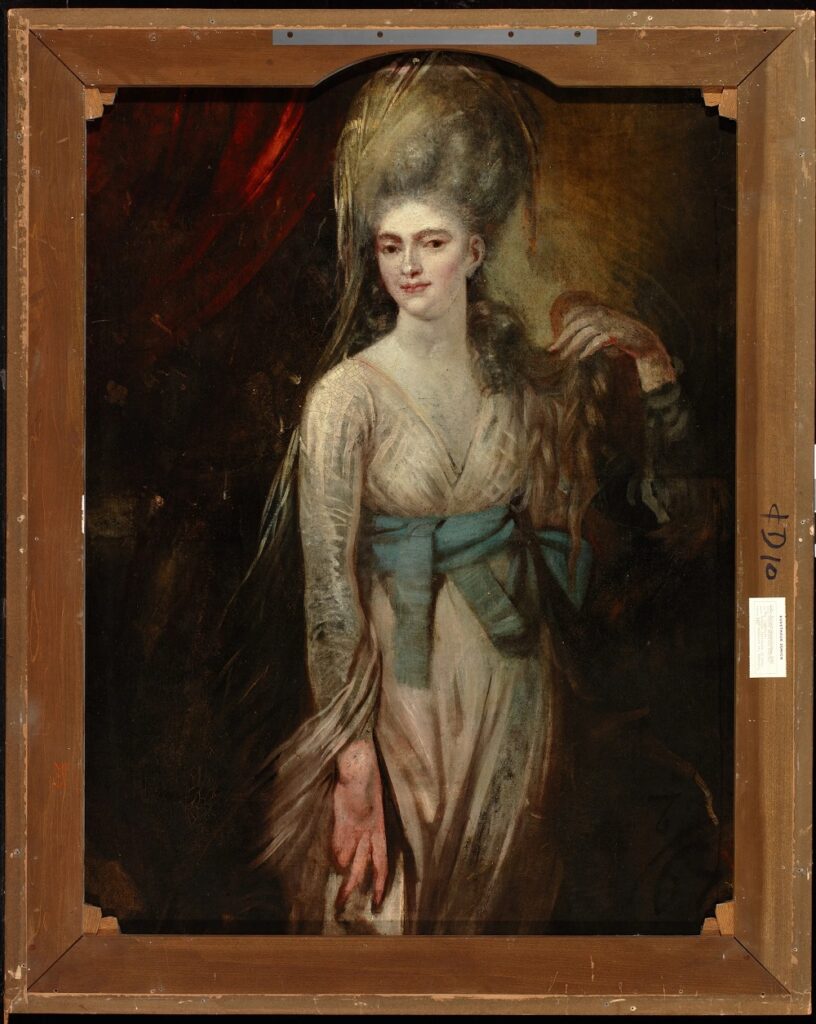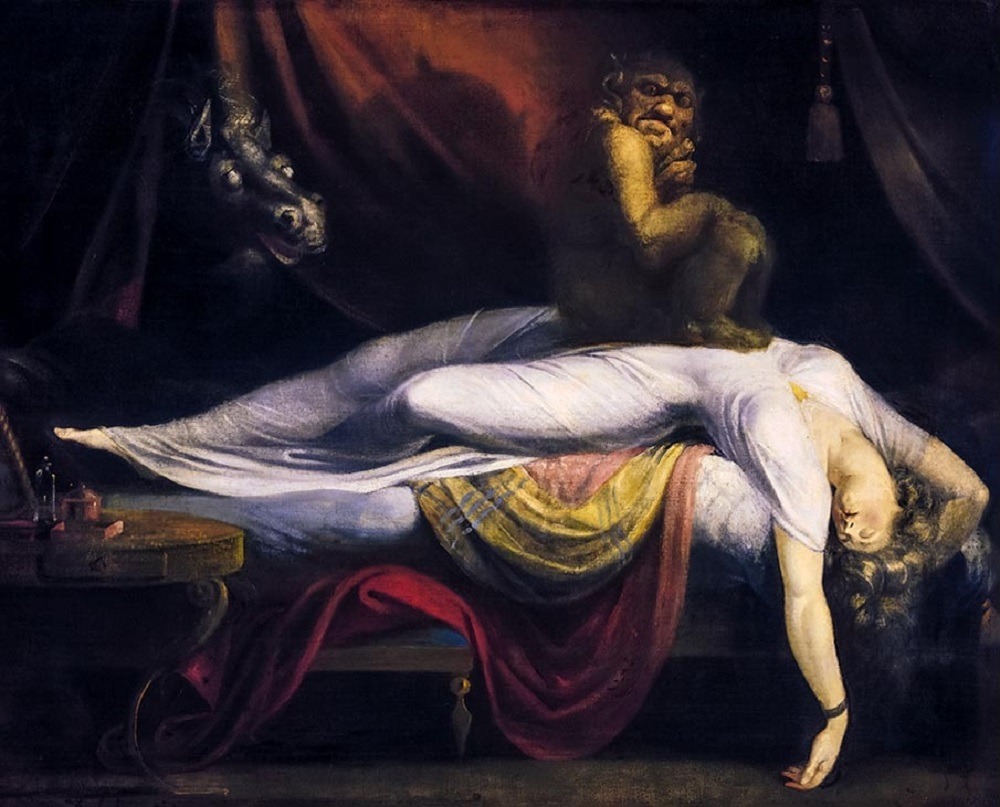The Nightmare (1781), a painting by Swiss-English artist Henry Füssli, remains a classic depiction of sleep paralysis. A young woman lying on the bed is unable to move. An incubus is sitting on her, symbolizing chest pressure, a sense of suffocation, and sexual violence. However, researchers Amaia Salazar (UK) and Tonia Raquejo (Spain) are confident that the painting holds much deeper meanings.
Interestingly, the famous The Nightmare has a reverse side – The Portrait of a Lady, which portrays Anna Landolt, who rejected the advances of the artist. It has been hypothesized that she is also the heroine of The Nightmare and that the dual portrait depicts her daytime and nighttime lives. The rejected Füssli wrote in an aggressive patriarchal manner, expressing his desire for this lady and indicating his willingness to defend his right to her, even if it meant killing someone. Thus, according to one hypothesis, the incubus in the painting symbolizes Füssli himself.

Questions have also arisen about the figure of the horse. The title of the painting, The Nightmare, consists of the words “night” and “mare.” Hence, the initial thought of researchers is that the horse is a wordplay symbol. However, as in the legends of sleep paralysis, the incubus sometimes “rode” his victim or even took the form of a mare. Additionally, Füssli might have believed that the two meanings of the word “mare” (“a bad dream” and “a female horse”) have the same origin.
Incidentally, according to one hypothesis, Füssli was under the influence of opium while painting The Nightmare. This could explain the bulging eyes of the horse. During those times, many within the literary and cultural circles of English Romanticism consumed various hallucinogens. Rumors suggest Füssli also ate raw meat to induce night terrors and hallucinations.
The article was published in March 2024 in Arte, Individuo y Sociedad.
Drugs and plants may have side effects and should only be used in consultation with a doctor. This article does not call for independent experiments.
Get all the latest news about lucid dreams via our channels on Telegram, Facebook, Twitter




